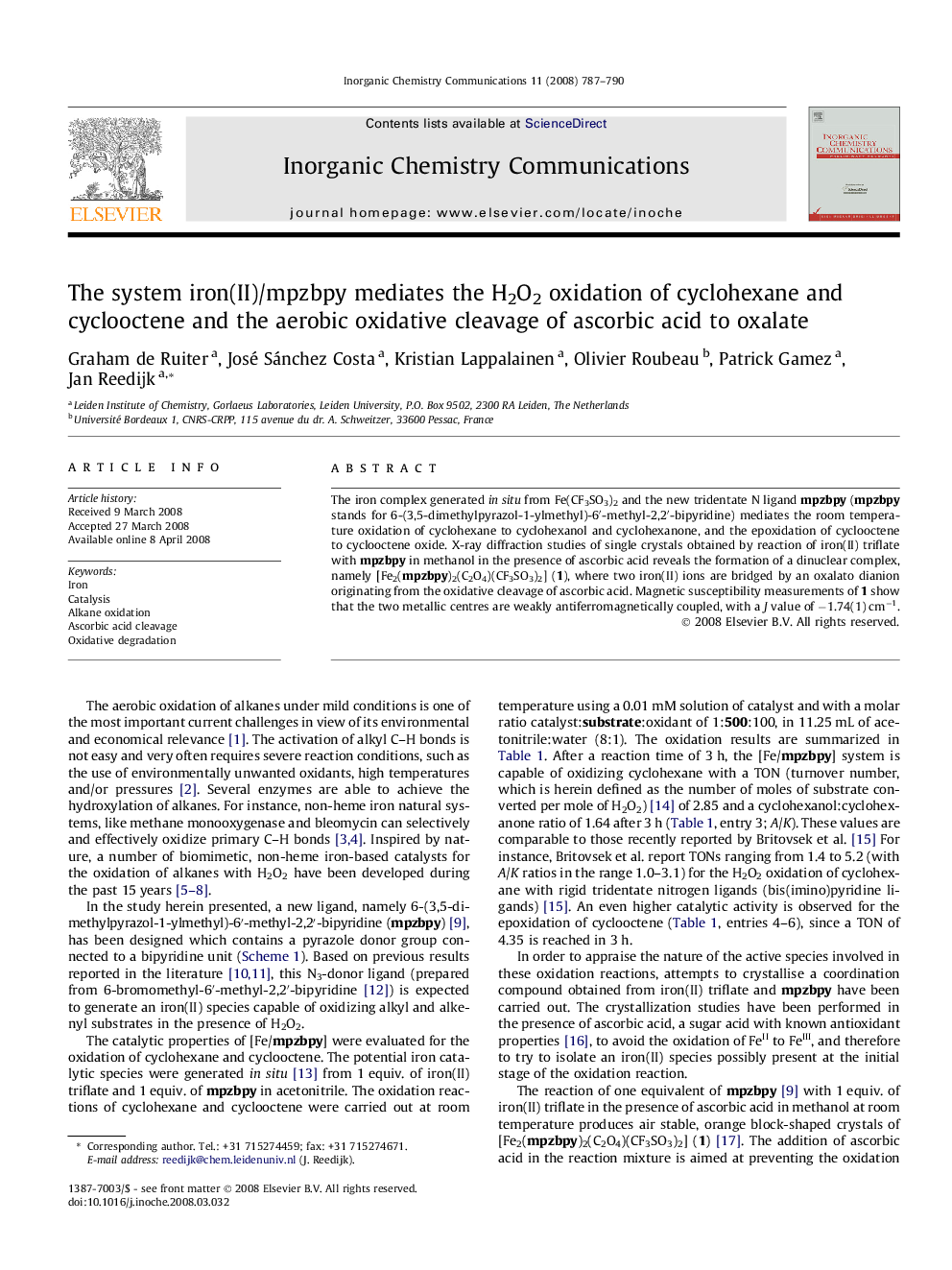| کد مقاله | کد نشریه | سال انتشار | مقاله انگلیسی | نسخه تمام متن |
|---|---|---|---|---|
| 1303247 | 974753 | 2008 | 4 صفحه PDF | دانلود رایگان |

The iron complex generated in situ from Fe(CF3SO3)2 and the new tridentate N ligand mpzbpy (mpzbpy stands for 6-(3,5-dimethylpyrazol-1-ylmethyl)-6′-methyl-2,2′-bipyridine) mediates the room temperature oxidation of cyclohexane to cyclohexanol and cyclohexanone, and the epoxidation of cyclooctene to cyclooctene oxide. X-ray diffraction studies of single crystals obtained by reaction of iron(II) triflate with mpzbpy in methanol in the presence of ascorbic acid reveals the formation of a dinuclear complex, namely [Fe2(mpzbpy)2(C2O4)(CF3SO3)2] (1), where two iron(II) ions are bridged by an oxalato dianion originating from the oxidative cleavage of ascorbic acid. Magnetic susceptibility measurements of 1 show that the two metallic centres are weakly antiferromagnetically coupled, with a J value of −1.74(1) cm−1.
A new iron complex generated in situ from Fe(CF3SO3)2 and the new tridentate N ligand 6-(3,5-dimethylpyrazol-1-ylmethyl)-6′-methyl-2,2′-bipyridine mediates the room temperature oxidation of cyclohexane to cyclohexanol and cyclohexanone, and the epoxidation of cyclooctene to cyclooctene oxide. The formation of a dinuclear complex, namely [Fe2(mpzbpy)2(C2O4)(CF3SO3)2] where two iron(II) ions are bridged by an oxalato dianion originating from the oxidative cleavage of ascorbic acid has been proven.Figure optionsDownload as PowerPoint slide
Journal: Inorganic Chemistry Communications - Volume 11, Issue 7, July 2008, Pages 787–790